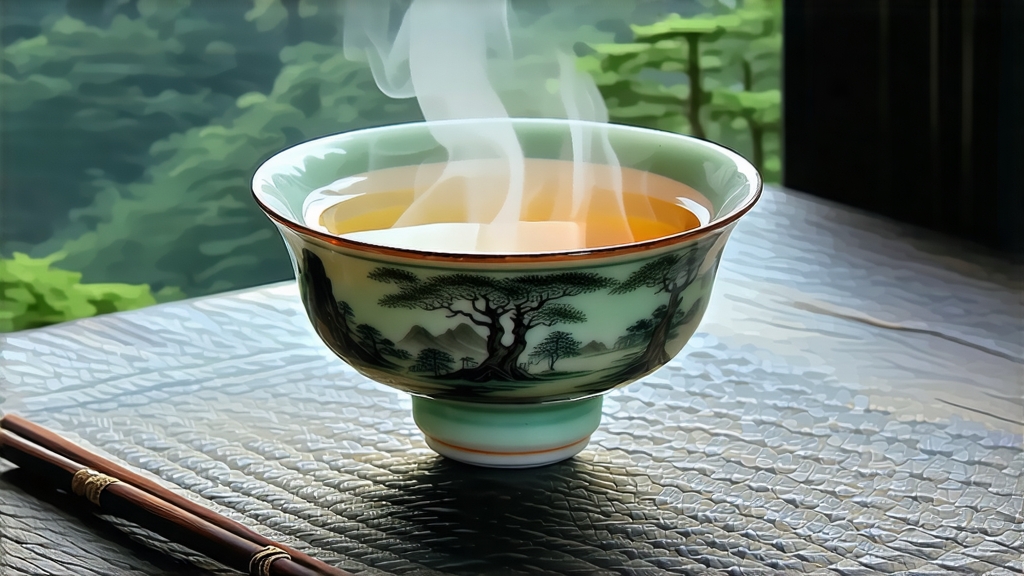
Tucked high on mist-crowned Mengding Mountain in Sichuan Province, Mengding Huangya—literally “Yellow Bud of Mengding”—is the oldest documented yellow tea on earth, yet the least known outside China. While green tea’s jade freshness and pu-erh’s earthy depth have travelled the globe, this golden-hued rarity has remained a whispered legend among court historians and mountain monks. To understand Mengding Huangya is to step into a story that begins in the Tang dynasty (618-907 CE), when the remote summit was declared a “Sacred Garden of the Immortals” and every spring the emperor’s courier horses thundered down the narrow plank roads carrying the first buds to Chang’an as tribute. For more than a millennium the tea was measured not in kilos but in liang—mere tael weights—worth their weight in silver.
What makes a tea “yellow”? It is not a cultivar but a slow, anxiety-inducing transformation that occurs after the leaves are made green. In the jargon of the workshop this step is called men huang—“sealed yellowing”—a controlled re-absorption of moisture that edges the leaf from grassy green to the colour of warm straw while coaxing out aromas of roasted pumpkin, fresh walnut and mountain orchid. Of the three celebrated yellow teas—Junshan Yinzhen of Hunan, Huoshan Huangya of Anhui, and Mengding Huangya—the latter is the only one harvested exclusively from dormant winter buds plucked before the Qingming festival, when the mountain still sleeps under a quilt of cloud and the leaf’s inner chemistry is at its most restrained.
The cultivar itself is a local Sichuanese strain known as Chuannong Huangya, a small-leaf, slow-budding shrub that clings to rocky red soil at 1,400 m above sea level. The mountain’s perpetual fog filters UV light, forcing the plant to synthesise more theanine and less catechins; the result is a brothy, umami-laden liquor without the tannic bite associated with spring greens. Farmers still observe the ancient rule “no bud, no pick”, meaning only the unopened spear—needle-tight and covered in down—is snapped off with the thumbnail. A master picker will finish the day with barely 500 g of fresh material; five kilos of bud are required to yield one kilo of finished tea.
Crafting Mengding Huangya is a four-day choreography of heat, rest and humility. The first step, shaqing (“killing the green”), is gentler than in green-tea work: the buds are tumble-tossed in bamboo drums heated to 160 °C for just three minutes, enough to denature oxidative enzymes but not to drive off all moisture. While still warm the buds are wrapped in thick canvas and left to suffocate for 60–90 minutes. Here the yellowing begins: trapped residual heat and humidity reactivate non-enzymatic browning, turning chlorophyll into pheophytin and releasing precursors that later manifest as honeyed notes. The bundle is opened, the leaves re-heated, re-wrapped, re-rested—up to three cycles—until the master smells “old book paper in a sun-lit attic”, the signal that the colour has migrated to the stem. Finally the buds are charcoal-baked at 55 °C for two hours, cooled, sorted and allowed to “sleep” for at least a fortnight so that the last traces of fire dissipate.
The finished leaf is a slim, slightly curved dart the colour of antique ivory; when rubbed it releases a scent that oscillates between grilled sweetcorn and steamed edamame. Stored in unglazed clay, it will keep for three years, gradually darkening and deepening into dried apricot and sandalwood.
To brew Mengding Huangya you need calm water and a steady wrist. Begin with a porcelain gaiwan of 120 ml; its white interior amplifies the golden liquor and allows you to watch the buds pirouette. Weigh 3 g of dry tea—roughly thirty buds—and rinse them for three seconds in water at 75 °C; this rinse is not discarded but savoured by the brewer as a “monk’s preview”, a whisper of what is to come. The first formal infusion uses 80 °C water and lasts forty seconds; pour in a thin stream along the gaiwan wall so as not to scald the down. The liquor emerges the colour